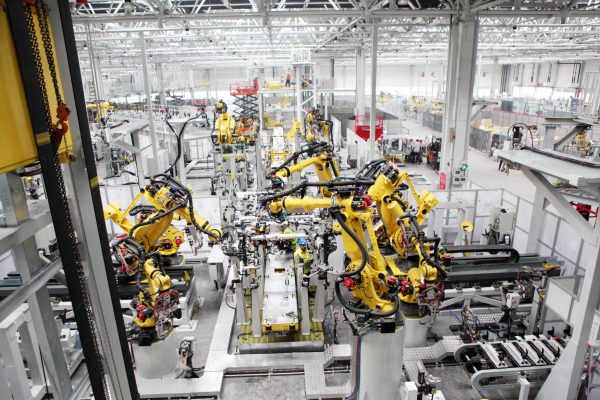External downside risks now dominate due to the COVID-19 pandemic and trade tensions, and domestic markets urgently need upgrading to lift technological innovation. The recently drafted 14th Five Year Plan emphasises an innovation-oriented development strategy. Although many measures have been adopted, how to effectively finance innovation remains one of China’s primary challenges.
Research and development (R&D) expenditure is a common measure of investment in innovation. Innovation investment is usually long term and tends to run down firms’ internal funds. The availability of external finance is critical for firms trying to innovate.
According to the World Bank, China’s expenditure on R&D as a percentage of GDP experienced steady growth between 1996–2017, rising from 0.56 per cent to 2.12 per cent. Compared to leading industrial countries in 2017, China’s R&D ratio was 0.7 percentage points less than that of the United States and 1.1 percentage points less than that of Japan. More resources have been allocated to capital expenditure over the past few decades.
The key question in coming decades is how China’s financial system can better support innovation investment. Evidence shows that better access to equity market financing leads to substantially higher long-run R&D investment and better innovation performance. Credit market development has a positive impact on fixed investment but zero or negative impact on R&D.
Recent evidence suggests that credit market development has a positive effect on incremental innovation, which are proxied by the count and citation of utility model patents. But it has a negative effect on substantive innovation, proxied by the count and citation of patents of inventions. Equity market development leads to higher substantive innovations but is unimportant for incremental innovations.
China’s financial market is still dominated by the banking sector, especially state-owned banks. The market for direct financing is less developed. The share of bank financing — including bank credit, trust loans, entrusted loans and banker’s acceptances — in the country’s total social financing declined from 87.2 per cent in 2002 to 70 per cent in 2019.
The proportion of direct finance, including corporate bonds and equity financing, in the country’s total social financing increased from 5 per cent in 2002 to 12.3 per cent in 2019. But the role of the stock market has not risen in line with China’s rapid economic growth, probably due to stringent financial regulations. According to PBOC’s statistics, the share of financing through the stock market dropped from 4.6 per cent in 2002 to 2.9 per cent in 2019.
Capital account liberalisation might play an important role in innovation, by facilitating external finance, promoting competition and enhancing corporate governance. Since 2019, China has adopted several measures to ease restrictions on ownership and licenses to foreign financial institutions. This financial opening-up has led to a significant increase in the number of wholly or majority foreign-owned financial institutions operating in China. But these foreign financial institutions still face operational problems such as uncertainty about capital outflow, inflexibility of the renminbi exchange rate and the segmentation of bond markets.
The evidence also shows that the innovation-enhancing effects of capital account liberalisation might be affected by country-specific characteristics such as financial development and institutional quality. This means that countries would have to reach a certain threshold of financial and institutional development before they can expect to benefit from financial openness.
Looking forward, improving access to external finance will play a crucial role in fostering innovation in China.
China should steadily open domestic financial markets more widely to both foreign and domestic private capital. This includes completing interest rate liberalisation, achieving a clean floating exchange rate, facilitating cross-border capital movements and lowering entry barriers for both private and foreign financial institutions.
China also needs to restructure its financial system by enhancing the role of direct financing. It should eliminate restrictions in equity markets and promote the development of multilayered equity markets. Equity markets, including stock markets as well as venture capital and private equity markets, are important for substantive inventions. It should reduce stock market interventions and transform the approval-based initial public offering system to a registration-based system. Improving the exit mechanism will enhance liquidity and efficiency in equity markets.
The sequencing of financial liberalisation also matters. The removal of distortions in domestic financial markets is much more important than external financial integration, not only for growth and economic stability, but also for economic efficiency. Regarding the capital account reforms, capital inflows might outperform capital outflows from the perspective of alleviating financial constraints and promoting investment smoothing.
Unless China’s domestic financial system undergoes further liberalisation, and its institutional quality improves, a rapid opening-up of its financial system could lead to financial instability or even financial crisis rather more effectively promoting innovation.
Xun Wang is a research fellow at the National School of Development and at the Institute of Digital Finance, Peking University.

